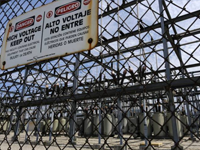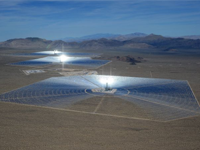California power prices have skyrocketed. Is this normal — or more Enron-style ‘manipulation’?

California power prices have skyrocketed. Is this normal — or more Enron-style ‘manipulation’? Outlet Full Name: Sacramento Bee News Date: August 19, 2020 The epic heat wave that’s produced rolling blackouts in California comes with a high price tag.
Solar Power Is Booming. But It’s Putting Desert Wilderness At Risk.

Solar Power Is Booming. But It’s Putting Desert Wilderness At Risk. Outlet Full Name: Huffington Post News Date: August 20, 2020 But as developers scramble to set up their [energy] projects, some scientists and conservationists are warning us not to forget vital ecosystems in the process.
St. Clair, Matt
Matt St. Clair, CEM, LEED AP Director of Sustainability UC Office of the President Matthew St.Clair is the first Director of Sustainability for the University of California’s Office of the President, leading sustainability efforts across the 10-campus UC system since 2004. Mr. St.Clair was a founding member of the Board of Directors for the Association […]
Guity, Arash
Arash Guity Principal LeapStep Arash Guity is a Principal and co-founder of LeapStep, an interdisciplinary high-performance design consultancy, improving the performance of buildings for design firms and facility owners. A licensed professional engineer with 15+ years’ experience in the built-environment, Arash has crafted specific expertise in high-performance design, critically aiding the delivery of some of […]
Phillips, David
David Phillips Associate Vice President, Energy and Sustainability University of California, Office of the President David Phillips provides strategic leadership for energy and sustainability initiatives across the University of California, which includes ten campuses, five medical centers, and three national labs. David and his 10-person team help connect researchers, students and operations staff to integrate […]
Baglione, Melody
Melody Baglione Professor and George Clark Chair of Mechanical Engineering The Cooper Union for the Advancement of Science and Art Melody Baglione is Professor and George Clark Chair of Mechanical Engineering at The Cooper Union for the Advancement of Science and Art in New York City. Dr. Baglione teaches courses in the areas of process […]
Jackson, Cori
Cori Jackson Program Director California Lighting Technology Center Cori Jackson is responsible for effectively planning, budgeting, scheduling, and monitoring CLTC research projects. For several years, Cori managed CLTC’s demonstrations program, facilitating the installation of leading-edge lighting technologies in more than 100 sites throughout California and in other areas of the U.S. Cori graduated from the […]
Morejohn, Joshua
Joshua Morejohn Energy Manager UC Davis Facilities Management Joshua works to develop an innovative energy management strategy and supports his team in implementing a wide variety of energy projects across the campus. He is a licensed professional engineer and a certified energy manager and received a B.S. in Mechanical Engineering at UC Davis, as well as […]
Carter, Deirdre
Deirdre Carter Energy and Sustainability Manager Berkeley Lab Deirdre Carter, PE is the Energy and Sustainability Manager and is part of the Sustainable Berkeley Lab team working to minimize the Lab’s greenhouse gas emissions and environmental impact. She is broadly responsible for understanding, analyzing, and reducing Berkeley Lab’s electricity, natural gas, and water consumption by […]
Elliott, John
John Elliott Chief Sustainability Officer Berkeley Lab John Elliott is Chief Sustainability Officer, responsible for directing and implementing the Lab’s sustainability strategy. He has broad and detailed experience in building efficiency, building energy management, renewables, water efficiency, electric vehicles, employee engagement, waste diversion, and toxics reduction. He was previously Director, Energy and Sustainability at UC […]

